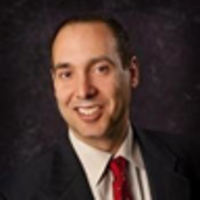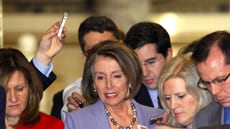
This week, the FBI announced that it had arrested a 48-year-old man for threatening House Speaker Nancy Pelosi. The day before, it arrested a man for threatening Democratic Sen. Patty Murray. Nine anti-government militiamen were jailed for plotting to kill police in Michigan, while a man who threatened House Minority Whip Eric Cantor in YouTube videos was also arrested last month.
American politics, it seems increasingly apparent, according to media reports, is careening towards a violent cataclysm of unknown proportions. Political violence in the United States, of course, is hardly a novelty.
The media paid enormous attention to the Weather Underground—even though they numbered in the hundreds, according to Todd Gitlin—lending them a cultural authority they did not possess.
The deranged gunman John Hinckley, JR., shot and wounded President Ronald Reagan in 1981. Anti-government fanatic Timothy McVeigh murdered scores of Americans when he bombed the Oklahoma City Federal Building in 1995. Yet a more telling age recalling our own times happened in mid-20th Century America, when fears of political violence spiked in the press and in political and academic circles.
Today’s menace seems to be coming largely from the FAR right, whereas in the 1960s, violence spanned the ideological spectrum. The threats then had terrible consequences: From President John F. Kennedy’s 1963 assassination to the 1968 murders of Martin Luther King and Robert F. Kennedy; from Chicago police assaulting anti-war demonstrators at the 1968 Democratic Convention, to the left-wing Weather Underground’s vision of overthrowing the U.S. government, violence and politics were a fixture of American political life. But in other crucial ways, some of the dangers posed were also overblown, which may offer a bit of comfort for today.
The violence of the 60s was spawned by a social fabric coming apart at the seams. Conservative morality was breaking down. The youth movement was testing conventions, experimenting with drugs, tuning in and dropping out. And the civil-rights movement challenged Jim Crow in the Deep South, provoking massive resistance, including the use of police dogs, firehoses, bombs and bullets. Riots broke out in inner cities across the country. Reactionary right-wing violence met an aggressive radical leftist fringe in a perfect ideological storm that has been likened to a 20th Century version of the American civil war.
There are a few seeds of similar unrest evident today. The country is awash in twisted conspiracy theories about the nation’s first African-American president. During last year’s campaign, a handful of individuals appeared at rallies claiming that then-Sen. Barack Obama was a Muslim terrorist who would ruin America. Obama’s assertion of a bold agenda, at a time of great economic crisis, has further inflamed anti-government anger—evident at Tea Party rallies across the country. In a handful of cases, the anger has sparked acts of vandalism and, with the enactment of Obama's health-care overhaul, threats to the safety of elected officials.
The understandable worry of the moment is that extremism will find a way to triumph -- transforming essentially political debates about health reform and the federal debt into violent acts committed by lone nuts against largely liberal officeholders. It's worth recalling, though, that the country overcame even the most tragic spasms of violence of that earlier era—and that despite the string of vicious actions that marked the 50S AND 60S, the threat to our politics and our way of life was somewhat overblown.
Liberal academics at the time argued that right-wing extremists were a rising power; attacking modernity and the democratic foundations of political traditions, right-wingers posed, some liberals said, a grave danger to America’s future. But the charges also often had an alarmist, breathless cast to them. Anti-Defamation League of B’nai B’rith leaders claimed that the John Birch Society was using television, radio, and other media to “poison” American politics with their violent-inducing conspiracy theories. They called such extremists “a creeping malignancy” and a "grand assault...that seeks to penetrate every aspect of American life."
Sociologist Daniel Bell fretted that extremists not only advocated impeaching but also “call[ed] to ‘hang’” Supreme Court Chief Earl Warren. Co-authors Seymour Martin Lipset and Earl Raab argued in “The Politics of Unreason” that “right-wing extremism” had “murdered six million Jews” in Europe; if it could happen there, the authors warned, right-wing violence could be visited upon the United States, as well.
Reporters, politicians, and academics also fixated on the threat to the country posed by the increasingly violent American left. But this threat, too, was often blown out of proportion. The Weather Underground (Bill Ayers, who became a lightning rod in the 2008 presidential campaign, was a leader) was a faction of the Students of the Democratic Society. The national media paid enormous attention to their pseudo-revolutionary activities—even though they numbered in the hundreds, according to famed sociologist Todd Gitlin—lending them a weight and cultural authority they did not possess. Gitlin’s excellent book “The Sixties: Years of Hope, Days of Rage” mentions that after one violent Underground street demonstration, the headlines blared that “SDS Women Fight Cops” and “Radicals Go on Rampage.” The Weathermen abhorred non-violent protests, spoke casually about “getting us a few pigs,” vowed to dismantle capitalism and lead a revolution against imperialism worldwide. But the bluster—like the oft-heard claims in the 1950s that Communists controlled the U.S. government or that right-wing extremists were importing faScism to America’s shores—didn’t amount to much.
In some ways, we have the very political establishment that was under attack to thank for helping to contain these threats. On the right, even conservative Republican leaders such as Ronald Reagan denounced the most outlandish John Birch Society theories. And the vast majority of anti-war protesters of the Vietnam era carried out their vigils peaceably, rejecting the Weather Underground’s quixotic calls to arms. And while the road was often rocky, the country’s political system did ultimately respond. The battle over civil rights – pitting non-violent protesters against an increasingly violent old Southern order--did ultimately result in strong federal protections. And Congress, after years of pressure, belatedly agreed to cut off funding for the Vietnam War.
Those eventualities are worth remembering today, as fresh tensions, fueled by the food-fight culture of cable TV and the Internet, once again boil over. Office windows may be broken, and a few deranged individuals will be locked up for threatening the safety of members of Congress. But it's also likely that most of the contemporary anger will find appropriate channels, within a flexible and enduring political system that buckles, but rarely collapses. Every time the country overreacts by imputing more power to extremists than they actually possess, it hands the extremists a victory--giving them what they want and making them feel like martyrs for their dark and delusional causes. Finding that balance isn't easy. But it's a goal the country must—and will--meet in the difficult days ahead.
Matthew Dallek, a visiting scholar at the Bipartisan Policy Center, teaches history and politics at the University of California Washington Center.






